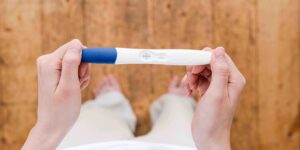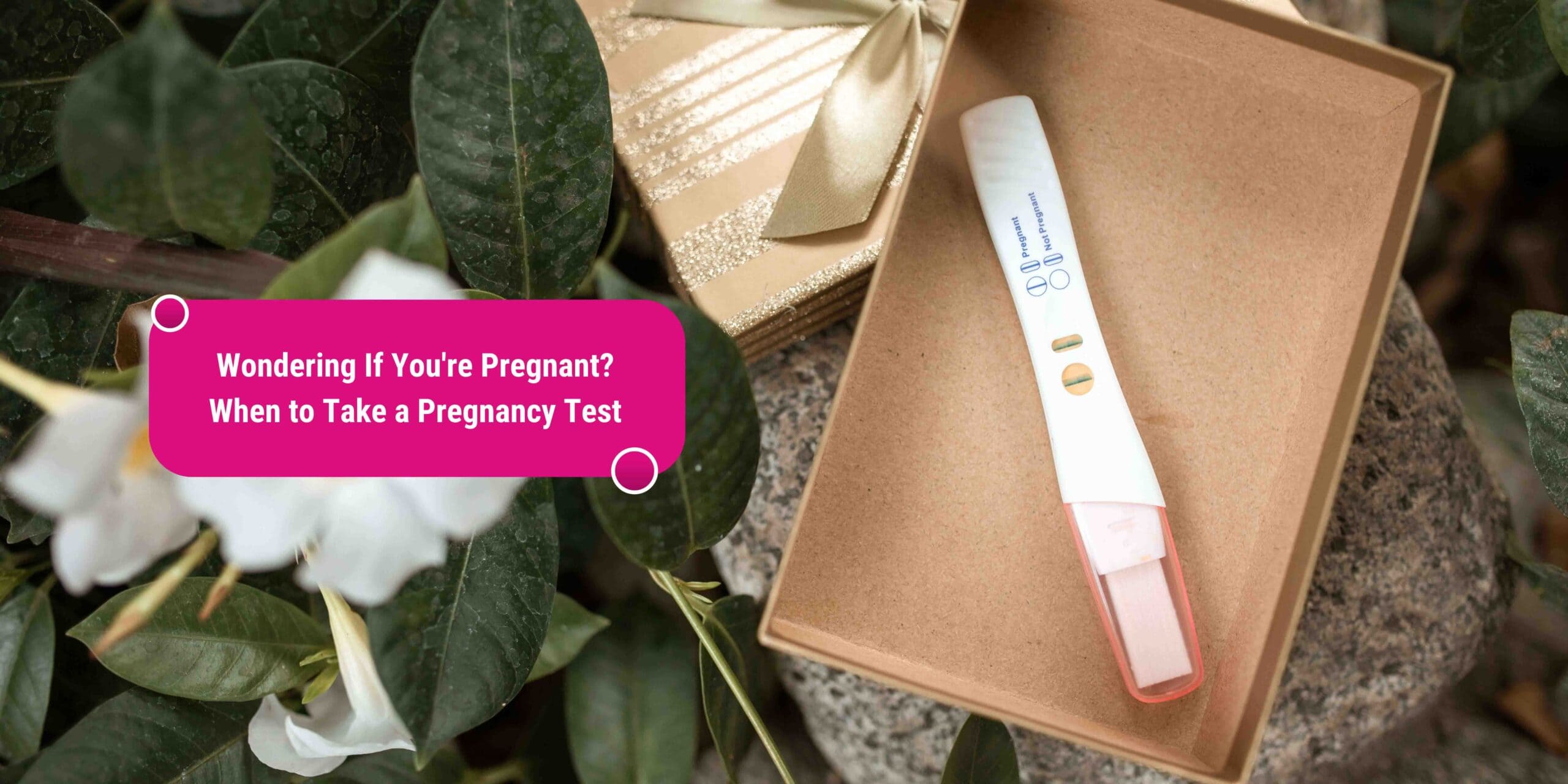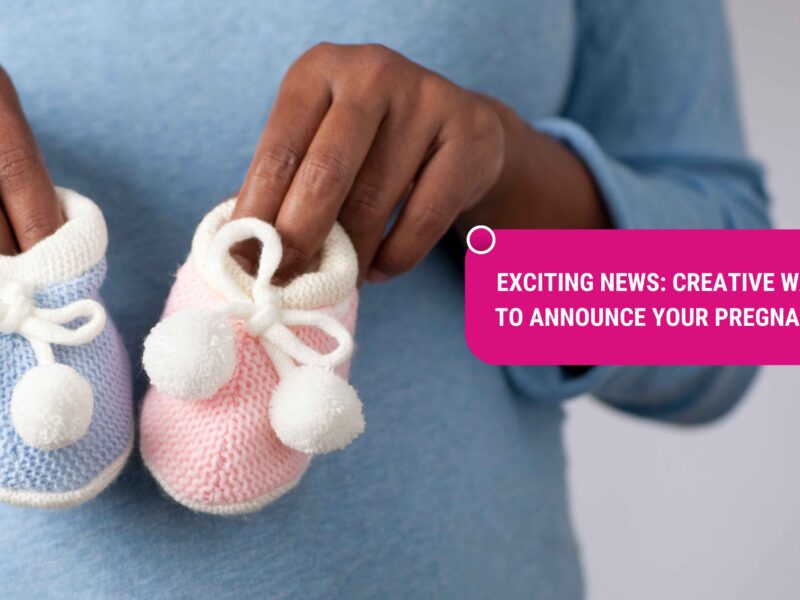Introduction
It doesn’t take a brain surgeon to realize that many of these symptoms are similar to the menstrual cycle. The nature of the woman’s beast few are exactly the same. Some have backaches and some have migraines. Others have crampy abdominal pain and others have mood swings. Nonetheless, if you have noticed a change, this could be due to pregnancy. Your first indication that something may be amiss is that Aunt Flo is tardy. Your second indication is, ‘Hmm, this has never happened before.’ Congratulations, a pregnancy test is in your future.
The most common symptoms early on are: – Tender, swollen breasts – Nausea or vomiting (We all know where that is leading.) – Fatigue – Recent increase in sensitivity to smell – Food cravings or aversions – Frequent urination – Elevated body temperature – Spotting – Bloating or a fuller feeling (See, you can blame the bloating or weight gain on Aunt Flo also.) – Constipation – Nausea and vomiting
When do you say enough is enough and wonder if you might be pregnant? Being late for your period is a dead giveaway. But how many women this month will hit the drugstore, frantically purchase a pregnancy test, only to find it was an unnecessary trip? Here you’ll find out when to take a pregnancy test and why.
Purpose of the Article
The purpose of this article is to answer questions about taking a home pregnancy test, when it should be taken, and when to see a healthcare provider to have a pregnancy test. The article will cover instructions for taking a home pregnancy test, as well as what to expect from a visit to the healthcare provider for a pregnancy test. This can be helpful if you are wondering if you may be pregnant but not yet ready to take a pregnancy test.
If you think you may be pregnant, taking a pregnancy test as soon as it’s possible is important. Knowing as soon as you can if you are pregnant will give you the time you need to make the choices that are best for you – from finding a healthcare provider to deciding what makes sense for you and your body. But when exactly can you first test to see if you are pregnant? And what type of test is best? This article has the answers for you.
Understanding Pregnancy Tests
You can use a home pregnancy test at any time of day. You can do the test as soon as you miss your period. You do not have to use your first-morning urine. Also, some tests are more sensitive than others and can be used earlier. If you are not sure when you should do a pregnancy test, talk with your doctor. Keep in mind that a urine pregnancy test can be positive about three days after you miss a period. If you do the test earlier – such as before your period is due – you will need to wait at least a few days to get an accurate result.
Pregnancy tests – when to take one and how they work – can seem confusing. But, they are actually pretty simple. Most home pregnancy tests measure the presence of the hormone hCG (human chorionic gonadotropin) in your urine. HCG is produced by the developing placenta shortly after the egg is fertilized and implanted in the uterus.
Types of Pregnancy Tests

The other form of home pregnancy test is the test strip style, and although it looks just like it sounds and you would definitely think this kind of test is unreliable based on appearances, it is quite the opposite. In fact, simply dipping the tiny test strip into a container of your urine sounds pretty unreliable too when you think about it, but this type of pregnancy test is actually very dependable. It also happens to be the cheapest form of pregnancy test on the market these days and is most widely sold and used by professional laboratories (i.e., hospitals and fertility clinics).
There are basically two types of pregnancy tests, at least that’s the case for a “home” version. One type of home pregnancy test is dip stick-style, usually contained in a small plastic casing. It’s the kind you mail away for or buy over-the-counter.
If you already think you might be pregnant, wouldn’t you want to know for sure as soon as possible? Often, what is referred to as a home “pregnancy test” actually tests for the hormone hCG in your urine, which is only produced once a fertilized egg has implanted in the uterus and begun producing this hormone. There’s also a clinical pregnancy test, which normally would involve a blood test, to tell if you’re pregnant. But that’s not the type of test I’m going to talk about here.
How Pregnancy Tests Work
For a urine pregnancy test, to detect hCG, urine needs to be collected into a container and a dropper is used to transfer some urine from the container into a little testing well. If the urine has enough hCG, then a little colored line appears, showing that the pregnancy test result is positive. If there is no line and there are no other colored lines visible, then the result is negative instead. No line means that hCG was not detected in the urine and therefore you are not pregnant. If a line is visible and you see two lines, then you are certainly pregnant. Remember when interpreting your pregnancy test to only consider the result in the time frame listed on the test instructions. Some pregnancy tests give results after a blot of time, but these are not accurate. If you’re taking a pregnancy test at home and that happens, you should treat the result as negative.
All pregnancy tests work by detecting the hormones which are pregnancy-specific, human chronic gonadotropin (hCG), that the body starts making just after fertilization.
Pregnancy tests are pretty accurate when you use them correctly. These tests run with the sample of urine or sometimes blood and can determine whether or not you are pregnant with a very good accuracy of over 97%. There are different brands of pregnancy tests that you can find in a drugstore. Each one of them is really easy to use and also cheap. They normally cost anywhere between $8 and $20, depending on if you buy a single test or a 12-pack.
Factors to Consider
In addition to worrying about a missed period, most women want to know that other potential pregnancy symptoms, such as morning sickness, back pains, fatigue, and unusual food cravings, mean that they could actually be pregnant. Again, though, these symptoms can be caused by any number of common and harmless causes, such as stress, poor diet, or illness.
One of the key facts to consider in this regard is that while fetuses need hCG in order to help support production of progesterone, which helps to prepare the woman’s womb to support pregnancy, hCG levels can vary in the early days of pregnancy. For the first few days or weeks of pregnancy, the amount of hCG present tends to double at least every two to three days. As a result, hCG levels can vary greatly from woman to woman and still be considered normal.
Another important factor to consider in this regard is that just as menstrual cycles vary from woman to woman in youth, they also become more variable as a woman ages. Most pregnancy tests work by measuring the amount of human chorionic gonadotropin (hCG) in a woman’s urine. The hormone is only present during pregnancy, and is produced by both the mother’s placenta and the embryo.
As any woman who has ever had a menstrual period knows, the length of time between periods varies greatly from woman to woman. To start with, though the average cycle is 28 days, the length of the cycle can vary greatly, in some cases lasting for just 15 days, while others can last as long as 40 days. Menstrual cycles can vary for any woman over the course of her life. Age, weight, diet and exercise habits, and a myriad of other factors can cause the menstrual cycle to vary from month to month in the same woman just as easily as cycles can vary between different women.
Menstrual Cycle Regularity
Every month after ovulation, count the average number of days in your luteal phase until right before your period begins again. This is exactly how to track ovulation, days of high fertility, and to predict when is the menstrual cycle’s next due date and should be regular or not. This will help to know the best time to try to get pregnant. If this is the situation, chances of a pregnancy are high. But when periods are irregular, the chances of getting pregnant may be less and pregnancy conception rates may be decreased. The best time to get pregnant is one to three days apart from your next period due date, during the days 11 to 21 from that due date.
If you are trying to get pregnant and are having difficulty, the first step is to know your menstrual cycle. First, start counting the number of days from the first day of one period to the first day of the next period. Record the total number of days. How many days are there? Second, count how many days your period is every month. It is important to remember to count only the full flow days. Tally how many there are. Third, subtract the number of days of your cycle from the number of days you have on your period. This will give you the number of high flow days until you start ovulating.
Timing After Intercourse
As a general rule, regardless of when you are expecting your next period, it is advisable to wait approximately 14 days after sex and then test with a sensitive pregnancy test. We are often asked if a pregnancy test can still determine a positive result even if someone has taken it before their period is due, and the answer is yes it can if about 14 days have passed since intercourse. A wait of two weeks after intercourse is needed to have a reasonable chance of detecting the hormone called human chorionic gonadotropin (HCG) in a woman’s urine. HCG at a concentration over 25 mIU/ml is considered an adequate marker for detecting pregnancy. Although a sensitive home pregnancy test may show a faint line at that point.
We’re often asked how soon a woman can take a pregnancy test after unprotected sex and when testing for pregnancy should ideally occur. The time when a pregnancy test is performed will largely depend on the date when you are expecting your period. Ovulation in a woman occurs in the middle of her menstrual cycle, or about 14 days before her next period is due. But the exact day of ovulation can vary among women and from cycle to cycle. Most successful pregnancies start becoming detectable within 2 weeks of the day of ovulation. This would mean about 4 weeks after the last period, although for some women it may be days before the expected period.
Early Signs of Pregnancy
What about symptoms and feelings? Isn’t it just a little too early to tell? How do you interpret abdominal cramps, light spotting, breast soreness, swollen breasts, nausea, fatigue, headache, and other symptoms? It’s a classic case of “damned if you do, and damned if you don’t”. As a matter of fact, it is actually much easier to mistake swifter, lighter menstruation for implantation bleeding. That’s why, the best time to answer this question and to ease your worries is a quick HPT. At the earliest, you can take the test as soon as eight to 10 days past ovulation. This means that the same HPT that you might take next time, or the very first home pregnancy test that you took, can take the test only three or four days from now.
There are millions of reasons not to ignore the first few signs that tell you are pregnant. As soon as the fertilized egg implants into your uterine wall—usually between six to 12 days after the egg is fertilized—your placenta starts producing the hormone human chorionic gonadotropin (hCG). This hormone is the “pregnancy hormone” and is the one that home pregnancy tests (HPT) are designed to respond to. It is also abundant enough to be detected in blood and urine tests. hCG helps other pregnancy hormones build up your body and eventually produce milk for your baby.
Common Symptoms
There are clues in the menstrual history that can make the timing of pregnancy more likely. In younger patients, within three months of starting menses, pregnancy is extremely unlikely. New mothers are unsinkable; they never become gravely ill from pregnancy. If you have a sudden onset of nausea and when do you use these devices they might cause harm. The majority of laboratory pregnancy tests are equally sensitive in detecting very early pregnancies. There are no known carcinogenic effects of these gestogens in humans because they have not been studied for such a long period of time as those for the oral contraceptive hormonal regime. Calculated gestational age was based on a certain last menstrual period and was still consistent with ultrasonographic findings in 206 women. The date of estimated due date calculated from the ultrasonographic examination was used in these cases. Magnesium sulfate has a loading dose of 4 to 6 g IV over 15 to 20 minutes for the anticonvulsant effects. Over 48 hours, the magnesium sulfate infusion was maintained at 1 to 2 g/h (serum magnesium levels should be maintained at 4 to 6 mg/dL and closely monitored).
The most common symptom of pregnancy is when a woman misses her monthly period. Other early symptoms of pregnancy include the following: Many women experience some unusual physical sensations in early pregnancy, often making them wonder if they are pregnant. Very early in pregnancy, most women experience symptoms that are similar to their menstrual cycle but different in some ways. These can include implantation bleeding or spotting, breast tenderness, a feeling of fullness and heaviness, tummy heaviness or bloating, and discomfort or itching around nipples. These symptoms can be related to the breastfeeding hormones (you produce some hormones in common with pregnancy in some breastfeeding situations), pregnancy-induced changes in blood volume and circulation, ovulation, or early pregnancy.
Conclusion
Most home pregnancy tests will give you a reliable result if you wait until at least the first day of a missed period. In other words, the test will be positive when your period is late. There are variations of home pregnancy tests that can be performed even before your period is late. The information provided will give you a good understanding of when you can start testing for pregnancy and should also give you a good idea of what type of test will be most appropriate. Keep the following important factors in mind before deciding to take a home pregnancy test: Home pregnancy test results are accurate. There are different types of home pregnancy tests. How soon you can take a home pregnancy test. The importance of reading and following home pregnancy test instructions. Data and Accuracy.
For the most accurate results, repeat the test one week after a missed period. A missed period is usually one of the first signs of pregnancy. If you can’t wait that long to find out and you know the day you may have conceived, the earliest a pregnancy test might give you an accurate result is four days before your next period is due. Some home pregnancy tests are more sensitive than others. In other words, some tests are able to detect a lower level of hCG (which means they’re more sensitive) and can usually tell you whether you’re pregnant sooner than tests that are less sensitive.



